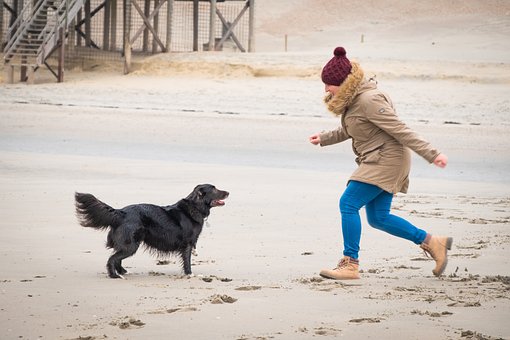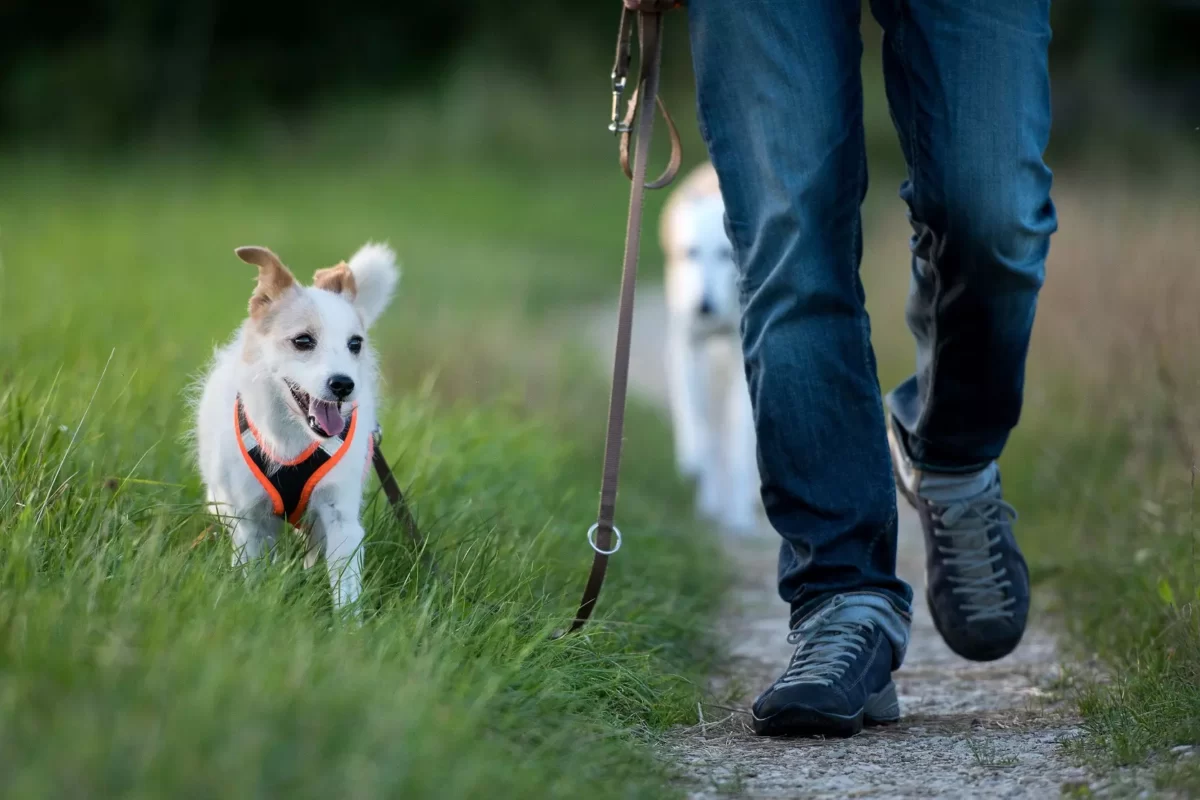Welcoming a fluffy bundle of puppy joy into your life is truly magical. Yet, amidst the excitement of wagging tails and puppy kisses, there comes the important responsibility of ensuring their safety and well-being. One often underestimated aspect of responsible pet ownership, especially in the initial thrill, is the significance of leash training.
While it might seem like a minor detail, keeping your young dog on a leash goes beyond being a mere rule; it serves as a pathway to a secure, well-adjusted, and joyful life for both your pup and those in your surroundings.
Picture this scenario: the sun is shining, birds are singing, and you’re leisurely walking with your adorable furball, the leash playfully trailing behind. It sounds perfect, but without proper leash training, this picturesque scene can swiftly turn into a chaotic ordeal. An unleashed puppy might dash into traffic, become entangled in thorny bushes, or initiate a confrontation with another dog. These are just a few of the potential dangers awaiting an off-leash pup.
However, leash training isn’t solely about ensuring physical safety; it forms the basis for a stronger connection and improved communication between you and your puppy. It’s akin to constructing a bridge of trust and control, enabling you to explore the world together with confidence and ease. Let’s delve deeper into why keeping your young dog on a leash is an investment in their future happiness and a demonstration of responsible pet ownership.
A Shield Against Unexpected Dangers
The world is full of thrilling yet potentially risky distractions for your inquisitive pup. A reliable leash serves as a protective barrier, stopping them from rushing into harm’s path. It maintains a secure distance, averting potentially dangerous run-ins with wildlife, confrontations with aggressive dogs, or accidental encounters with toxic substances hidden away.
Research conducted by the American Veterinary Medical Association reveals that dogs without leashes are significantly more prone to accidents, injuries, or even getting lost, underscoring the pivotal role a leash plays in safeguarding their physical well-being.
The Gateway to Good Behavior
Think of a leash as your communication lifeline. It enables you to gently steer your puppy, offering a framework and limits for them to understand and flourish within. Leash training opens the door to teaching crucial commands like “heel” and “come,” aiding them in navigating busy streets or crowded sidewalks with assurance.
It helps rein in undesirable behaviors such as pulling, lunging, and excessive barking, fostering a harmonious relationship between you and your companion. Persistent leash training, coupled with positive reinforcement, establishes the foundation for a well-behaved and obedient dog, allowing you to confidently bring them anywhere, knowing they’ll be a delightful companion rather than a source of stress.
The world is an intriguing place, and puppies, being naturally curious explorers, have a desire to sniff every corner and greet every person. However, uncontrolled interactions can be overwhelming or even frightening for both your pup and those around them.

A leash creates a controlled environment for socialization, enabling you to introduce your puppy to new people and other dogs in a safe and positive manner. This gradual exposure helps them become confident and friendly individuals, at ease with navigating social interactions without the stress of being off-leash and potentially unmanageable.
Yet, overlooking leash training can lead to serious consequences. The dog bite lawyers at Fang Law Firm have mentioned that unrestrained puppies, fueled by instinct and excitement, may easily become reactive, barking excessively or displaying aggressive behavior toward other dogs or even strangers.
This not only poses a risk to public safety but also forms negative associations with the outside world, potentially causing anxiety and fear in your dog. Investing in proper leash training from the start helps avoid these negative experiences and sets the stage for a well-adjusted and socially adept dog.
From Pups to Pooches
Leash training might seem like a challenging task, but don’t worry! With patience, consistency, and positive reinforcement, it can be a fulfilling journey for both you and your pup. Begin in controlled settings like your backyard or quiet streets, using treats and praise to reward good leash behavior. Slowly increase the difficulty by moving into busier areas and introducing distractions. Keep in mind that every successful step, every “heel” followed, and every “come” obeyed is a triumph, laying the groundwork for a well-trained and obedient dog.
If you find yourself feeling overwhelmed, don’t hesitate to seek professional help from a qualified dog trainer. They can offer expert guidance, personalized training plans, and invaluable support throughout the process. Remember, proper leash training is an investment in your dog’s future, yielding dividends in increased safety, improved behavior, and a stronger bond between you and your furry companion.
Keeping your puppy leashed goes beyond mere rule-following; it’s an act of responsible pet ownership, a demonstration of your commitment to their safety and well-being. It’s a promise to raise a confident, well-adjusted dog, one that brings joy not only to your life but to everyone they encounter.
It’s about creating a world where humans and furry friends can coexist harmoniously, strolling through parks, cafes, and bustling streets, with leashes serving not as constraints but as symbols of trust and shared understanding. So, view the leash not as a burden but as a bridge, paving the way for a lifetime of adventures, shared laughter, and unconditional love.
Let your puppy explore the world with the comfort of safety and guidance, witnessing the growth of a relationship built on trust and respect. Remember, a leashed pup is a happy pup, and a happy pup lays the foundation for a joyful world for us all.
Additional Tips for Successful Leash Training
Choose the Right Gear: Select a leash and collar that suit your puppy’s size and breed. Avoid harsh collars that may cause discomfort.
Keep it Short and Fun: Keep training sessions brief and enjoyable. Avoid overwhelming your puppy with too much information all at once.
Celebrate Small Wins: Acknowledge small victories! A wagging tail and a successful “heel” command deserve a treat and plenty of praise.
Consistency Matters: Stick to a routine and enforce rules consistently for the best results.
Patience is Crucial: Leash training requires time and dedication. Be patient; the rewards are worth it.
As your puppy grows and learns, the leash can transform from a necessity to a symbol of shared adventures. Picture leisurely walks on the beach, exploring hiking trails, or enjoying a coffee shop patio together with your pup proudly walking by your side. These moments build a lifelong bond, made possible by the trust and control established through leash training.
So, leash up your furry friend, embrace the journey, and witness the magic as your pup blossoms into a happy companion








